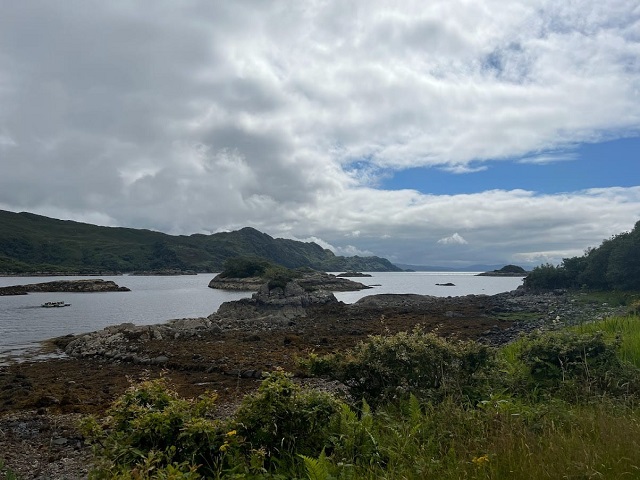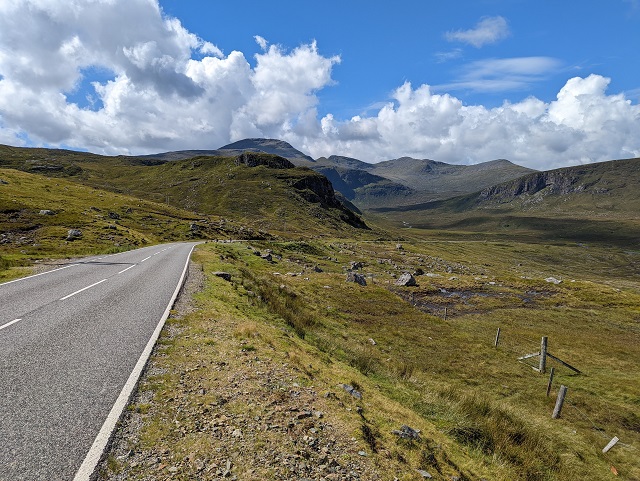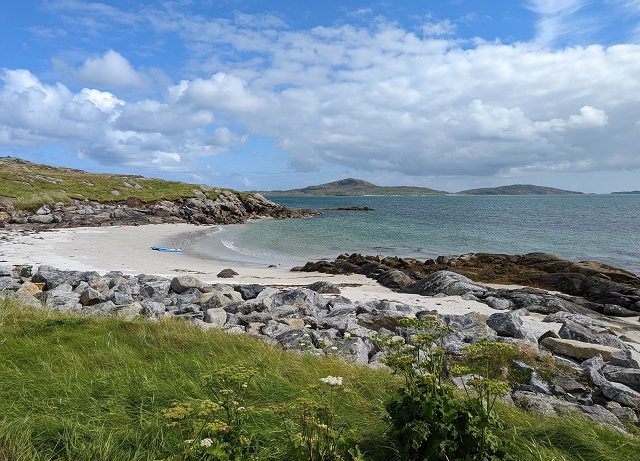The Outer Hebrides are some of the most remote areas of the United Kingdom. The islands offer tranquility, beautiful scenery and unforgettable beaches. Also, for adventure travelers you can hike and cycle the famous Hebridean Way and explore some of Scotland’s best by means of slow travel.
It’s no wonder that Britain’s islands are calling to travelers from around the world and welcoming as many as 219,000 tourists to the western isles.
Before you pack your bags, read through this guide and learn more about The Outer Hebrides and how each island will enrich your adventure.
What to Expect From The Islands
If you’re heading to the Outer Hebrides you’ll be spoilt for choice on exactly where you go. Our summary of the islands will help you decide which area will capture your heart the most so you can plan your trip accordingly.
Here’s an introduction to some of Scotland’s most iconic coastal getaways.
Isle of Lewis and Harris
Lewis and Harris is the largest island in the Outer Hebrides. Officially, Lewis and Harris are one island, but are often thought to be two as they are referred to separated or independently.
Harris
Harris is the most southern part of the island and home to some of the most irresistible white, sandy beaches. If luck strikes you’ll explore these isles under blue skies and sunshine. If you’re there in the sunshine your excursion for the day will be a no brainer: beach walks and moments of appreciation for mother nature.
If you find that the weather isn’t on your side – because you never really know in Scotland – there’s plenty to keep travelers enriched with Scottish culture through crafts – and of course – distilleries.
Isle of Harris is home to Stornoway, the isles main town and the capital of Harris and Lewis. For many Stornoway will be your first experience of the Outer Hebrides and you can expect a warm welcome, good food and accommodation.

Lewis
The isle of Lewis, like Harris, is rich in culture and history. Some of its most famous landmarks include Callanish Standing Stones.
Before travelling to the Isle of Lewis and Harris take a look at:
- Luskentyre beach
- Seilebost beach
- Isle of Harris Distillery
Uist
Uist is made up of six islands: Berneray, North Uist, South Uist, Grimsay, Benbecula and Eriskay.
Each island has a remote vibe, perfect for hitting that reset button and embracing calm. The sound of the waves on the west coast and the openness of the isles will be grounding on your spirit.
You can explore the isles by car, foot or bike. Or even from the sea, opting for sea tours and watersports such as kayaking.
From experience, Northern Uist is one of the most remote sections of the Outer Hebrides. The landscape is flat and the roads quiet. As you move toward South Uist you’ll be greeted again by white sandy beaches and eventually the ferry port at Eriskay.
Barra
If you start your Hebridean journey at the Southern Isles your first stop will likely be Isle of Barra. Generally, travelers from mainland Scotland will take the Calmac ferry from Oban to Castlebay which takes around 5-6 hours.
Castlebay can be a great first-stop for your Hebridean experience. There’s the famous Kisimul Castle; the castle in the bay, which is precisely why Castlebay gets its name. The castle is perfectly photogenic and open to the public, although it was closed in 2022.
The village itself is small and quaint with plenty of accommodation. You can even find delicious Indian food at family run restaurant, Café Kismul. It’s a very small restaurant so during peak season be sure to book a table.
Like its neighboring isles, The Isle of Barra offers plenty of adventure and watersports.
The Hebridean Way
The Outer Hebrides is famous for its walking and cycling trail, The Hebridean Way.
The Hebridean Way officially starts at Vatersay and finishes at the Butt of Lewis although some travelers opt to do the journey in reverse. The trail is 184 miles long
Slow travelers can enjoy The Hebridean Way trail or create their own Outer Hebrides cycling route depending on the type of adventure they’re after.

How do you get around the Outer Hebrides?
You can get around the Outer Hebrides by car, foot, bike and public transport. Whatever your chosen mode of transport if you’re island hopping you will definitely use a ferry at some point.
The ferry operator is Calmac. Ferries run fairly frequently, but be sure to check the timetables directly on the website as times do change seasonally. Calmac are pretty good at updating their site with ferry times and cancellations.
What is the best time of year to visit the Outer Hebrides?
The best time of year to visit the Outer Hebrides is the peak of summer, between June and August. During the summer period you are less likely to experience rain, but as we know the British summer, particularly in the northern areas can be susceptible to rain.
There are also midges to contend with, but if you want the best of the weather you will need to visit when midges are around. Midge seasons usually starts around May and ends in October. Truthfully, midges are not too bad. They are a little frustrating at dusk and dawn but during the day they’re generally okay. If you’re camping or caravanning near water you might want to be in by the evening.
The flatter lands of the Other Hebrides means that winds can be strong. Pesty midges don’t fare the wind too well in windy conditions, which is great news for the campers! All you need is a gentle breeze for midges to be no problem at all.
Weather needn’t stop you from visiting the Outer Hebrides, there’s plenty to do, indoors and out. Just make the best of the good weather while you’ve got it and find yourself a café, a distillery or art gallery when the weather is not so great.

Photos: Zoe Ashbridge

